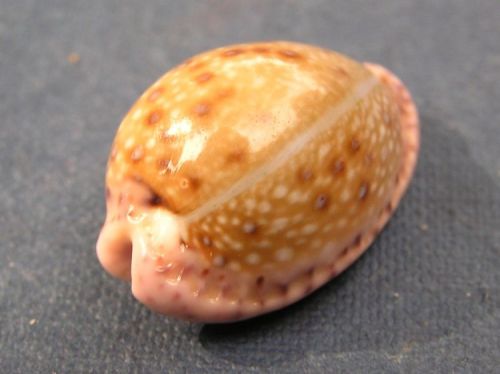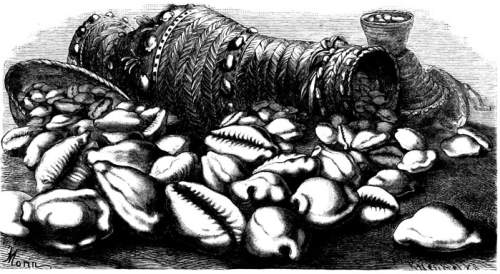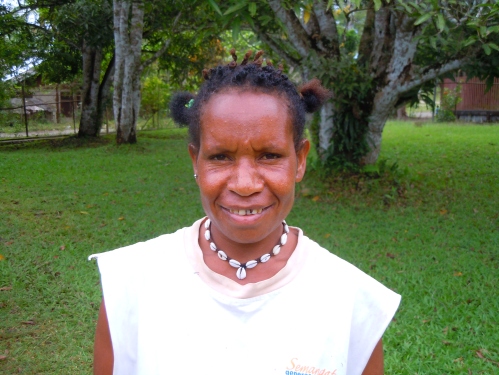My travels in West Papua introduced me to so many different people, and my eyes were opened to a host of new and interesting customs and cultures, unlike anything I had experienced in the past three decades of travel around the world. I’d heard stories of head-hunting, tribal warfare, freedom fighters, of Don Richardson’s amazing “Peace Child” account with the Sawi tribe, of man-eating witches and of witch-eating men!
.
I also heard of less dramatic but equally intriguing accounts surrounding the lore of pigs as valued over women (principally to extract a high bride price in the purchase of wives), the extraordinary value of cowry shells (so credited because of the storied histories accompanying them), the use of stinging nettles as salves to abate pain, and of polygamous clans headed by honored chiefs (in which more wives indicated an increase in the chief’s status).
.
This post explores the beautiful cowry shell, an item not unfamiliar in the legend and mythos of New Guinea. I start with some interesting general information (with links to original resources) and conclude with a few paragraphs specific to the tribes of West Papua. Enjoy!
Cowry shells (also spelled cowrie, plural cowries) are home to the Cowry snail, a marine mollusk of the Cypraeidae family. These sea snails are native to the Indian and Pacific oceans, particularly the waters around the island nation of Maldives, off the southwest tip of India.
The shells of cowries are usually smooth and shiny, often colorfully patterned, and more or less egg-shaped, with a flat belly showing a long, narrow, slit-like opening, often toothed at the edges. Their lengths range from a tiny 5 mm to a robust 19 cm.
The attractive cowry shells have fascinated people throughout history and, subsequently, have been used extensively in jewelry and for other decorative and ceremonial purposes.
.
Interestingly, they are also one of the oldest known forms of currency and have been widely used as such around the globe. This practice dates back at least several thousand years ago to China where, because shells could not be counterfeited and sources for cowries were so far removed from China, the wealthy imported cowry shells for use as currency. Excavations of early Chinese emperors evidenced that even the royal dead had currency in store for the afterlife, as cowry shells have been found placed in their mouths! The shells were used for centuries as African currency and huge amounts of Maldivian cowries were introduced onto the African continent by western nations during slave trading days. History shows that they were also used as means of exchange on the sub-continent of India as well as in Arabia.
Beyond their value as currency, cowry shells have been used as symbols of wealth. Rows of shells found attached to African masks symbolized great wealth and clothes covered with cowry shells likely indicated royalty. Anton Ploeg documented wealth items used in the Western Highlands of West Papua, Indonesia. He uses the term “wealth items” to refer to movable objects (cowry shells and pigs rather than land, for example), accorded great value and used as means of payment, as gifts, as ritual objects, and as markers of identity.
Perhaps most surprising, the Ojibwe (Chippewa) original peoples in North America, who inhabited the area around Lake Superior, used cowry shells in ceremonies. Debate exists about how the Ojibwe traded for or found these shells, so far inland and so far north, so very distant from their natural habitat. Oral stories and bark scrolls seem to indicate that the shells were found in the ground, or washed up on the shores of lakes or rivers. They may also have been obtained through trading.
There are numerous additional uses of cowries, both traditional and modern. Rachel Naba has written an interesting piece entitled, “The Gift of the Cowry.” Cowry shells have also been viewed as symbols of womanhood, fertility, and birth. Waistbands strung with cowry shells have been worn around hips to increase fertility. Women in Roman Pompeii wore them to prevent sterility. In Japan, one name for the cowry shell translated to “the easy delivery shell” and some women held cowry shells while giving birth to aid in a successful delivery.
.
Cowry shells are sometimes used as dice, as in board games or in divination (foretelling the future or gaining occult knowledge). As shells are thrown, those landing with opening upwards indicate the actual number rolled.
.
The Cowry in West Papua
.
As I desired to understand the culture & customs of the various people groups in West Papua, what I learned regarding the cowry came in part from casual conversations with Papuans. I am also indebted to Kal Muller, whose stunning photography and careful documentation in West Papua, have helped introduce not only the world to the Papuans, but also Papuans to their own rich history. In February 2013, Mr. Muller gifted me three beautifully written and illustrated texts: Introducing Papua, Highlands of Papua, and South Coast of Papua. These excellent resources distill years of research into manageable, organized bites; perfect resources for my visit to the interior highlands.
.
The importance of cowries in the highlands of West Papua was linked to their usefulness as trade items. While major trade items included pigs, salt, stone blades, and seashells, the specific type of cowry, Cypraea moneta, morphed into the most commonly used form of currency. Items less valuable than the major trade items were traded or sold for this “shell money.” Other types of cowries were used as well, but on a much smaller scale. Lower value items included, for example, various bird feathers, colored soils, or orchid fibers from outside the area.
.
The “shell money” system may have been introduced to New Guinea by the Japanese during World War II and further spread via porters assisting the first Protestant missionaries through the 1950s. In the mid-50s, the Dutch government brought in large quantities of lower valued shells. Soon thereafter the Indonesian rupiah (IDR) was introduced. Cowry shells still see use in trade and purchase, and are currently used alongside the rupiah. This is especially true in more remote interior communities.
Cowry shells also still serve an important role in acquiring brides, as part of the bride price, in highland communities. The cowries are accompanied by a number of pigs as well as rupiah, the latter two in accordance with the wealth of the groom’s clan.
.
I found it immensely interesting that the value of the cowry – especially in times preceding 1950 when cowries were difficult to obtain – had more to do with its history than with its size and color, which predominantly determines the value of newer shells.
.
It was explained to me in story form; that is, “This cowry was used to settle a certain dispute between such-and-such clans. Later, it was offered as part of the bride price for so-and-so, a man of status in the community. Finally, this particular cowry was given as part of a trade for a number of pigs needed for a significant celebration.” It was in this manner that cowries increased in value as they accumulated history.









